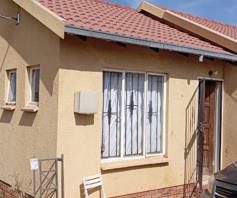Africa’s real GDP has grown at an average 5 percent in the past decade and a half, making it the fastest-growing region globally after the Middle East, according to the April economics research done by Goldman Sachs.

Devtraco Plus' Palmers Place development in Accra, Ghana offers homes priced from $850 000.
The report notes that there is now a growing consensus that the performance is ‘home grown’, with headline growth rates remaining strong despite various global headwinds during and in the aftermath of the global financial crisis.
According to Goldman Sachs, this growth has led to the emergence of frontier market economies with the most potential including Zambia, Ghana, Rwanda, Angola and Mozambique, Nigeria, Kenya, Tanzania, South Africa, Ethiopia and Morocco (which combine high potential with a large population).
The bank expects Africa to attract an increasing number of international investors and continue to experience rapid economic growth in the future.
Furthermore, Goldman Sachs think Ghana and Kenya have the most growth potential.
Property experts are saying because of their attractiveness and growth potential, Ghana and Kenya offer property buyers value for money with high returns on investments.
The Knight Frank Africa Report 2013 reveals that the Ghana residential property market is buoyant with lots of off-plan developments being sold, which includes the Polo Heights with luxury penthouse apartments.
Other apartment developments include La Beach Towers and Villagio while some apartments are bought by local buy-to-let investors.
Monthly rentals for a typical four bedroom executive homes in prime locations command US$6 000 with 10 percent prime yields.
According to Kenneth Ofori, business manager for Devtraco Plus, a luxury real estate company in Ghana, the private sector is possibly one of the main engines of growth in Ghana's economy with millions of dollars being invested into the real estate sector in the past decade.

Africa’s real GDP has grown at an average 5 percent in the past decade and a half, making it the fastest-growing region globally after the Middle East, according to the April economics research done by Goldman Sachs.
Ofori says as the economy grows, so will the demand for quality residential and commercial properties with statistics from the Ministry of Water Resources, Works and Housing indicating a shortfall of approximately 80 000 housing units per annum.
He explains that investors come from the West, East and the African sub-region and demand for luxury residential and commercial buildings have been on the rise and building more executive developments in the prime areas of the capital cities will aid in meeting the needs of high earning individuals.
“Data gathered from the Ghana Investment Promotion Council (GIPC) indicates that the real estate industry is an attractive sector for foreign investors as it promises high returns.”
He says they aim to meet the needs of these high earning individuals in Ghana and points out that challenges facing real estate companies go beyond the lack of synergy between the property market and the financial sector.
“Difficulties attached to the acquisition of land in prime areas, as a result of litigation and complex land transfer procedures, are the main difficulties facing Ghana's luxury real estate market but Devtraco Plus are committed to working through these to achieve their end goal,” says Ofori.
Devtraco Plus is busy with the development of Palmers Place in Accra, one of their flagship developments in Ghana, which comprises seven five bedroom luxury townhouses in the first phase.
These townhouses are triple storey semi-detached homes in a secure complex with a guardhouse, clubhouse and swimming pool, and units are priced from $850 000.
Another development is The Niiyo Dzorwulu, a state–of-the-art six storey apartment block has penthouses to suit executives offering 31 units with only 15 left, and future projects will take place in Labone (Avante Garde) made up of apartments and Cantonments(Acasia) comprising a mixture of townhouses and apartments, he reveals.
Devtraco reports that properties in their developments are seeing a 17 percent per annum value increase and rental yields of between 8 to 10 percent per annum.
Meanwhile in Kenya, residential demand continues to grow says Kunaal Samani, a director of Pam Golding Properties in Kenya, which has an office in Westlands in Nairobi and is looking to expand soon in the Mombasa area.
Properties located in areas such as Muthaiga, Kileleshwa, Runda, Gigiri, Loresho, Lavington and Kitisuru are sought-after and are priced from Kes (Kenyan shilling) 20 million to 100 million (approximately US$235 000 to US$1.2 million).
Demand is coming from business executives and young professionals who seek luxury lifestyle living.
He says from a local home buyer perspective, areas such as Athi River and Syokimau located on the outskirts of Nairobi, offer affordable prices for two to three bedroom apartments starting from about Kes 5 million (approximately US$58 000).

Pam Golding Properties have sold the units at Trident Heights Riara, a modern multi-storey apartment building in fashionable Riara Road, Nairobi in Kenya.
Samani says middle income buyers are attracted to areas such as Nairobi west, Langata and South C, where prices range from Kes 10 million to 20 million (approximately US$117 000 to $235 000), while for higher income buyers, areas such as Lavington and Brookside are popular, with a price range of Kes 25 million to 50 million (approximately US$295 000 to US$588 000).
“High net worth buyers purchase in areas such as Runda and Muthaiga, where properties start from Kes 50 million upwards (approximately US$588 000).”
According to the Annual Broll Property Report 2013 many buyers and tenants look for ‘lockup- and-go’ apartments or homes in secure estates, both for reasons of safety as well as easy access to commercial hubs and notably, diplomatic nodes.
Demand for furnished homes is particularly high in areas including Gigiri and Westlands.
Samani says Gigiri, Muthaiga, Runda, Nyari, Kitisuru, Brookside and Riverside appeal to South African buyers because of their vibrant, upbeat neighbourhoods with access to international schools, shopping malls, restaurants, bars and other amenities.
Rental yields on apartments range up to 7.5 percent for buy-to-let investors and foreigners can acquire property or land on a leasehold basis (99 years) in Kenya and mortgages are easily available, he says.
Home rentals range from about $3250 (R27 500) a month for apartments, to an average of $4 000 (R33 900) a month for townhouses, according to the Broll report.
Broll notes that new residential projects such as Tatu City, Migaa and Thika Green are driven by the improved multi-lane Nairobi-Thika highway.
Samani says factors that drive demand for residential property and home values are location, good infrastructure, amenities such as swimming pools, also noting that the construction of the building impacts on the value of the property - elements such as architecture, design and materials used determine the worth of the property.
Buyers seek properties with a long lifespan and sound and appealing architecture, he says.
“Land availability - if there is scarcity of land, the value of properties will increase in specific areas.”
He adds that areas situated in the heart of the city are much more expensive than those on the outskirts and most buyers are more inclined to acquire land that costs less. – Denise Mhlanga









